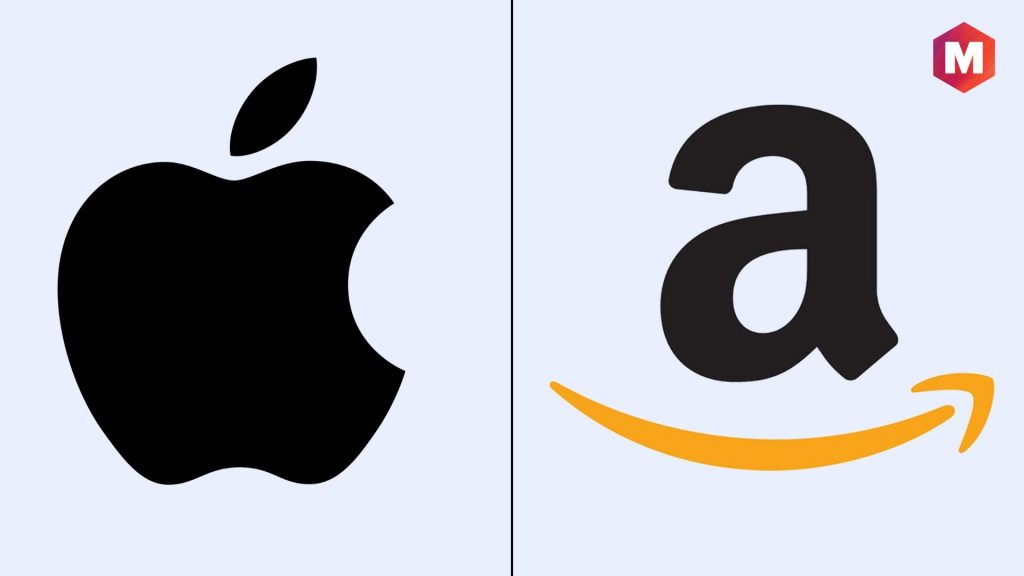Businesses frequently use defensive marketing methods as an effective marketing tool to protect their market share and anticipate potential new competition. This technique is critical to any company’s success since it reduces industry saturation and competition. A solid defensive marketing approach can assure your product’s success in today’s competitive environment!
Defensive strategy first appeared in the late 1990s and has long been seen as a superior option to offensive marketing, based on the saying that prevention is preferable to treatment. Speaking of defensive strategy sounds like war strategy, which is not far from the truth. Four to five brands/firms must prepare to defend their market position whenever a new product is introduced.
Table of Contents
What is Defensive Marketing?
Defensive marketing is a strategy in which a large or established corporation uses measures to protect its market share, profitability, product image, and overall reputation when it detects a developing competition. This allows it to defend its industry-leading position against competitors.
Market leaders should employ defensive methods in market share, mind share, and brand position. Unlike offensive marketing, which focuses on actively targeting a competitor, defensive marketing emphasizes protecting the brand’s market share and consumer base. Various techniques may be used to achieve this purpose, including special offers or discounts for customers, loyalty programs, advertising campaigns, and product alterations designed to distinguish it from similar products.
Furthermore, while engaging with existing clients via these methods, the tone should always be conversational to inspire trust and dedication to your company’s services.
Key Takeaways
- Established organizations use defensive marketing to safeguard their market share, profitability, and reputations from newcomer competitors.
- This strategy aims to sustain market share and client base through promotions, loyalty programs, advertising, and product differentiation.
- Unlike offensive marketing, which focuses on competitors, defensive marketing prioritizes brand protection and client retention.
- Effective communication in a conversational tone is critical for building trust and loyalty among existing clients.
Examples of Defensive Marketing
1. Apple
- To defend its market position, this corporation employs a Defensive Strategy by producing innovative products and services that push the limits of what is feasible.
- This method makes it difficult for competitors to keep up with their progress. Furthermore, its clean and modern design aesthetic, identifiable as “Apple,” stands out in the minds of consumers, discouraging them from purchasing competitors’ products.
- The defensive strategy ensures that customers stay loyal to Apple and that it promises high-quality products, services, and experiences.
2. Amazon
- Amazon has always used a Defensive Strategy to remain ahead of its competitors and remain the e-commerce industry leader. It accomplishes this by constantly improving its technologies and investing in innovative projects.
- Amazon Prime is the ultimate example of defensive marketing. With free shipping, unmatched special advantages, and first-rate customer service that protects its brand name from competitors, it is no surprise that people stay passionately loyal to Amazon.
- Investing substantially in quality control techniques ensures that their products stand out from the crowd when consumers choose between comparable products, ensuring that they are always picked above competitors.
Why do companies use defensive marketing?
Defensive marketing is critical for organizations to remain competitive, supplement their growth initiatives, and meet customers’ needs. Here, we look at why businesses use defensive marketing as part of their strategy:
1. Strengthening their Competitive Edge
Companies use defensive marketing to protect market share from competitors. This protects loyal customers and keeps their products in consumers’ minds. This is especially important for merchants, department stores, and restaurants that rely on return customers.
Businesses with large or infrequent transactions may use defensive marketing to target existing and new customers. Remember to develop strategy often rather than resting on their laurels. Competitive dynamics can change client preferences and a firm’s success, making defensive strategy adaptation crucial to market power.
2. Enabling Operational Expansion
Interestingly, defensive marketing boosts operations. Businesses can grow their client base and revenue using sound plans and defensive measures.
Defensive marketing is critical in competitive, disruptive industries like technology. Defensive marketing helps companies stay agile and innovate to grow.
3. Optimizing Customer Satisfaction
Being informed of competition strategy and customer behavior is crucial to defensive marketing. By monitoring market dynamics, companies can better meet customers’ changing wants and improve their processes. This attracts new customers and offers the company an edge over the competition.
Types of Defensive Marketing
1. Position Defense
Position defense, the most fundamental defensive tactic, involves a corporation generating high-quality products and building strong customer relationships. Like a castle with strong walls, quality, and reputation keep off competitors.
2. Flank Defense
Flank defense is a technique in which a corporation defends its market share by strengthening weak points vulnerable to competition. This could target niches, develop new product lines, or expand into related areas to protect the overall market position.
3. Preemptive Defense
Preemptive defense entails taking action before a possible threat becomes a severe issue. Predicting market trends needs ongoing monitoring and foresight. Companies that follow this technique may release items ahead of the competition or use strong marketing tactics to discourage competitors from entering their market.
4. Counteroffensive Defense
In a counteroffensive defense plan, a corporation replies to a competitor’s attack by launching its own. This could be a price modification, an advertising campaign, or introducing a new product directly competing with the competitor’s offering.
5. Mobile Defense
Mobile defense is a strategy in which a corporation strives to expand its market region to strengthen its position. A corporation can retain its market dominance by constantly seeking new markets and diversifying its product offerings.
6. Contraction Defense
Contraction Defense entails giving up weaker regions or exiting low-profit markets to combine resources and safeguard stronger areas. This method is typically used during severe competition or bad market circumstances.
Why Defensive Marketing Matters?
Defensive Marketing becomes essential when firms grow. This method examines the competitive landscape, consumer behavior, and trends to create an exclusive value offer to help your firm succeed. You are set for success with Defensive Marketing!
Defensive marketing strategies vary per product type. For instance, a defensive approach for FMCG, cosmetics, personal hygiene, and other frequently purchased products will largely target existing customers with various tactics.
For less-frequently purchased things like electronics, garments, etc., the defensive strategy will be longer-term and target existing and potential customers.
The basic defensive marketing strategy question is how organizations should respond to a competing new brand. You can take many defensive steps once you recognize that a new market entrant may compete with you.
First, choose the intensity of the competition. Use defensive marketing methods if a new or close competitor is innovative and about to seize your market share.
Competitors might be threatened via evolving technology, competitive advantage, deregulation, or patent expiration. These risks warrant analysis and defense strategy preparation.
How to Develop a Defensive Marketing Campaign?
Defensive marketing is an essential component of any successful business strategy. If demand for a product is increasing, market leaders must acquire new consumers faster than their competitors to maintain a consistent level of profitability.
A few steps to consider when building a defensive marketing campaign include:
1. Understanding the competitive landscape and consumer behavior
Understanding the competitive landscape and consumer preferences is critical for effective business management. Awareness of these elements can help you perceive prospective barriers and develop proactive solutions to keep your firm ahead of the competition.
2. Identifying weaknesses in the competitive landscape
By knowing your opponents’ vulnerabilities, you can devise a strategy that will make it nearly hard for them to prosper in the market. This might range from selecting better goods and services to offering an unparalleled consumer experience.
3. Developing an effective marketing and advertising strategy
To effectively engage and reach your target audience, you must develop a strategy plan that integrates traditional marketing methods with digital channels. Take advantage of social media channels and influencers to maximize your impact.
4. Analyzing results of product improvements
You must track the results to achieve success with your marketing strategy. Gather consumer feedback, market trends, and other data points to determine what works best for your organization – and, more crucially, what doesn’t. This way, you can make the necessary changes quickly and keep moving forward!
5. Making pricing and distribution adjustments
It is critical to have a defensive marketing strategy that considers and adapts price and distribution methods. This must involve taking into account any changes in the competitive environment that may affect the cost or delivery of items.
6. Defending profits without safeguarding market share
Finally, one of the most effective defensive marketing strategies is protecting market share and profitability. As competitors acquire a foothold in the industry, you should be able to maintain a profitable firm. When developing a defensive marketing strategy, focus on improving the customer experience while identifying ways to become more efficient and cost-effective. This might help you keep an advantage in business even while competition grows around you.
What kind of Customers should be targeted by Defensive Marketing?
Defensive marketing can be quite beneficial for clients who are susceptible to external influences. Industries or regions with significant competition and ever-changing trends make choosing difficult; this is where defensive promotional methods can be beneficial.
Defensive marketing is frequently used to identify clients likely to respond positively to price promotions or advertising. Furthermore, this method can be useful for contacting buyers sensitive to price changes or product availability.
Advantages and Disadvantages
The defensive technique, like all other strategies, has advantages and disadvantages.
Advantages include increasing the value of the company’s products and services, stressing the brand’s benefits, and diminishing the equity of the company’s primary competitors. Also, because it is viewed as a long-term plan, it alleviates the pressure of constantly feeling threatened and allows for the engagement of existing and new clients.
Problems arise when a company needs help understanding its target market or why it is losing market share. They might also arise when the method aligns differently from the company’s long-term growth objective.
Tips to Optimize Defensive Marketing Strategy
1. Knowing your key features and optimizing your core competencies offers a competitive advantage
To design this strategy, a company should focus on its core capabilities, advantages, and assets to defend its market position. The emphasis should be on the company’s brand identity, customers’ perceptions of the company/brand, the mix of products and services supporting that identity, and pricing and advertising strategies. For example, if a loss of market share is scheduled, the goal would be to minimize and slow the loss while maintaining key clients.
2. Comprise a wide range of defensive strategies to optimize your defensive marketing campaign
Your defensive strategy can involve tactics like brand positioning, improvement in brand features and price, advertising strategies, and sales promotion campaigns. A combination of aggressive marketing tactics and actions will make your defensive strategy perfect.
3. Incorporate a combination of positive strategy, inertial strategy, retarding strategy & parity strategy
After conducting market research for defensive marketing, businesses should utilize positive techniques to retain customers, while inertial strategies aid in reducing client loss. Your retarding strategies should be centered on your strengths, while your parity approach should focus on your opponent’s perceived strengths.
4. Educate loyal customers about your strengths
Effective defensive marketing methods remind existing clients of your strengths, so you should highlight your USPs to position yourself as a leader. It boosts client confidence and promotes the entire firm to the core customer base.
5. Find opportunities for innovation
Not only can defensive marketing help you stand out from the crowd, but it may also help you maintain your market share. How? Responding rapidly to competitive threats and developing effective strategies that persuade customers to select you over competitors.
6. Focus on growth
Rather than getting caught up in the craziness of competition, it allows you to stay one step ahead and focus on progress. With this proactive strategy, you may identify ways to differentiate yourself from your competitors and guarantee that your brand is seen. This strategy ensures that you actively drive them ahead rather than simply keeping up with market trends.
7. Be aware of competitor activity
It demands keeping a tight eye on your competitors’ activity. This enables you to anticipate their next move and modify your plans accordingly, allowing you to stay ahead of the competition while keeping your brand in the spotlight. By doing so, you can keep an advantage over your opponents!
However, as we return to reality, we realize that a defensive marketing strategy must be carefully planned to succeed. It must consider each company’s and competitor’s most valuable asset: their customers and how the customer will react to changes in market forces and strategies.
Defensive Marketing vs. Offensive Marketing
When studying marketing methods, it is vital to understand the difference between offensive and defensive marketing. In contrast to its counterpart, Defensive Marketing is more responsive because it focuses on retaining current consumers from competitors.
Offensive marketing tactics are based on a proactive strategy to increase market share. Aggressive campaigns promote existing products/services and target new clients to achieve a larger market share.
Conclusion
If you’re looking to get a comprehensive understanding of what is defensive marketing, take note of the following points:
It effectively safeguards a company’s name, reputation, and market position from current or future competition. It relies on preemptive strategies that anticipate potential threats and proactively address them before they become damaging realities.
Companies can proactively defend their market share, reputation, and customers by utilizing proactive strategies such as public relations campaigns, advertising placements in multiple channels, and other media-based tactics. By using defensive marketing tools strategically, organizations are better equipped to protect themselves from competitors.
FAQs
Q. What are some defensive strategies that a market leader can use?
A. Market leaders can use strategies such as –
- Public relations campaigns
- Advertising placements in multiple channels
- Product improvement
- Customer loyalty programs
- Research and development into new products and services.
Q. When to use defensive marketing?
A. Defensive marketing is a good option when a company has established itself in the market and wants to protect its position from competitors. It is also a preventative measure against future threats and can be used when companies are trying to maintain their reputation or customer base.
Q. What are some of the objectives of using defensive marketing?
A. The primary objectives of defensive marketing are to maintain or grow the company’s market share, protect its reputation, and retain current customers. It can also be an offensive tool to differentiate a company from competitors and secure new customers.
Liked this post? Check out the complete series on Marketing


